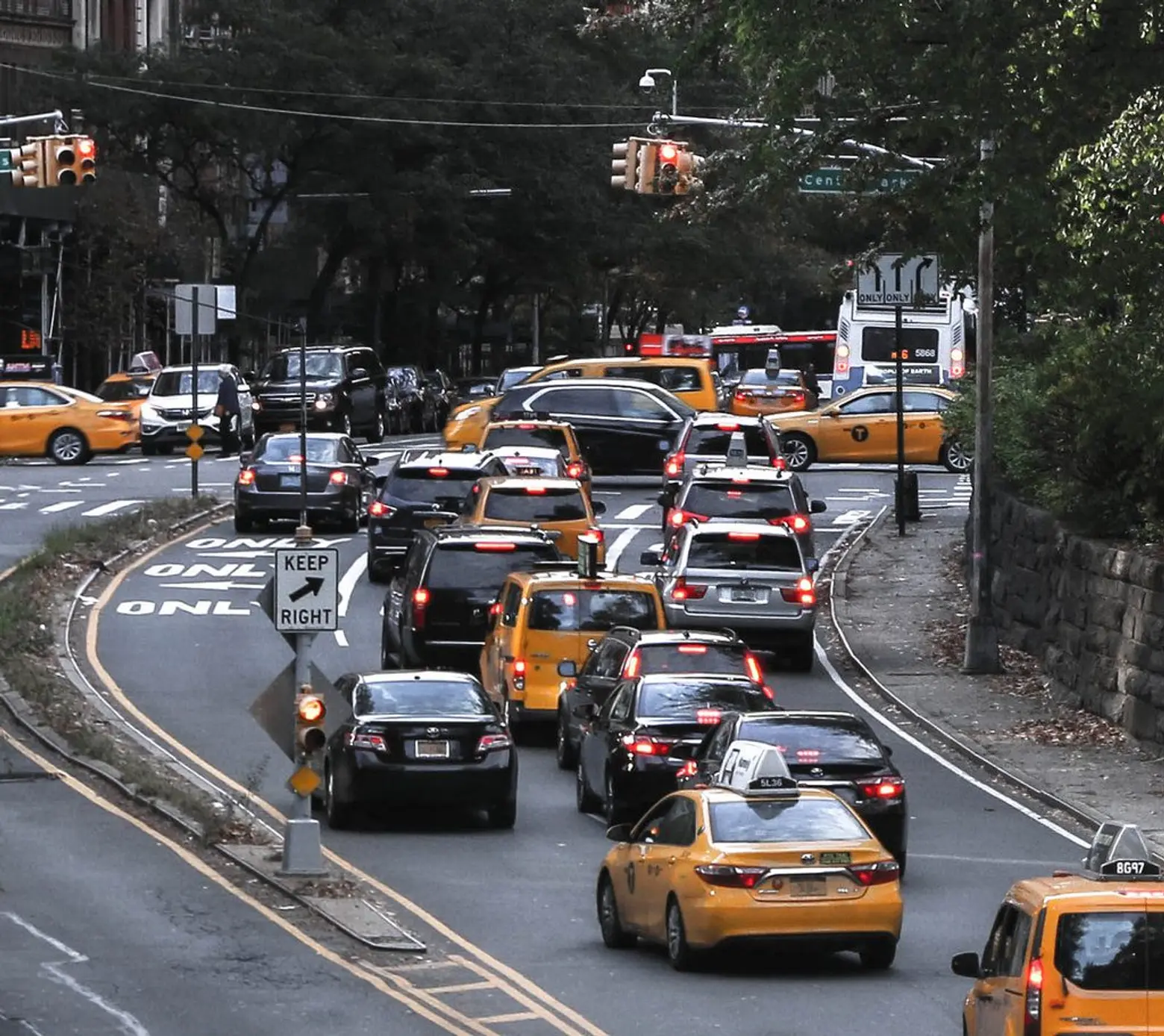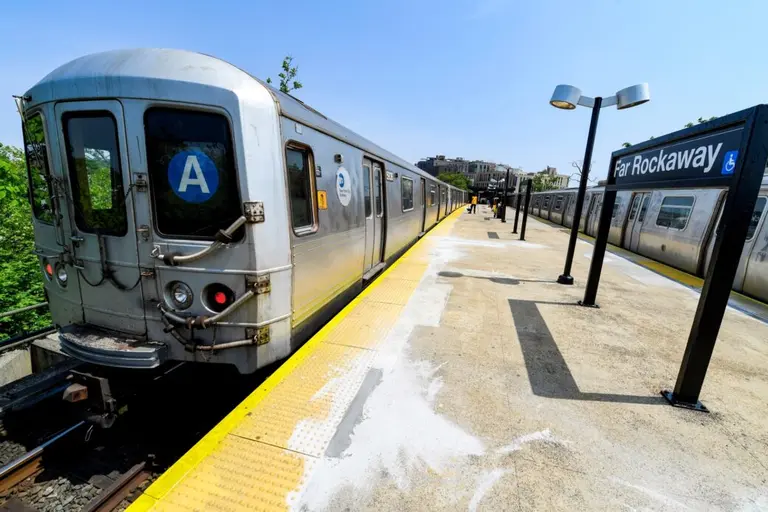De Blasio unveils five-point plan to reduce congestion on NYC’s busiest streets

Photo via Lucas Klappas on Flickr
Mayor Bill de Blasio announced on Sunday a five-point plan designed to ease congestion in the city’s busiest neighborhoods. The program, called “Clear Lanes,” includes a series of initiatives like creating new moving lanes in Midtown, clearing curbs during rush hour and expanding NYPD enforcement of block-the-box violations. Beginning in January, in addition to the heavily congested Midtown, rush-hour deliveries will be banned during a six-month test run on Roosevelt Avenue in Queens and Flatbush Avenue in Brooklyn (h/t New York Times).
In Midtown, the city plans on creating continuous curb moving lanes at 11 key crosstown streets and allowing deliveries for one side of the street. The NYPD will double the number of Traffic Enforcement Agents from 40 to 80 in this area and will focus on moving and parking violations, double parking and off-route trucks. The city said it will reform its double parking and other curb regulations to make them easier for drivers to understand and for officers to enforce.
As part of a six-month pilot program beginning in January, the city will ban curbside loading on both sides of the street during peak hours, 7 am to 10 am and 4 pm to 7 pm. The corridors to be tested include Manhattan in the zone bounded by Sixth Avenue, Madison Avenue, 45th Street and 50th Street, in Queens along Roosevelt Avenue and Broadway to 108th Street, and in Brooklyn, along Flatbush Avenue and stretching between Grand Army Plaza and Tillary Street.
De Blasio said the city’s growing population and economic vitality, while positive, is putting a strain on the already crowded street network. “New Yorkers have been telling me loud and clear about the quality-of-life problems created by traffic where they live and work,” the mayor said. “With a targeted effort to help clear travel lanes, delivery zones, intersections and highways, these initiatives will address these concerns head-on, using established and new tools that will keep our City moving, from midtown to all of our neighborhoods.”
The city will also increase efforts against cars that “block-the-box,” which happens when drivers do not leave enough space for pedestrians to safely cross intersections. In addition to increasing NYPD enforcement at 50 key intersections across five boroughs, the city’s Department of Transportation (DOT) will install special block-the-box markings and update signage to make drivers more aware of the restrictions.
Outside of Manhattan, Clear Lanes will address highly congested commercial districts like Downtown Flushing, the North Shore of Staten Island, Hunts Point and Downtown Jamaica. DOT will also evaluate data to find the most/ least congested, slowest/fastest, unreliable/reliable locations across the city.
In collaboration with state and local transportation agencies, the plan will make highway traffic part of its focus, especially on the Cross Bronx and Staten Island Expressways. The city will test measures like placing traffic lights at exits and stationing emergency vehicles along the routes.
This summer, Governor Andrew Cuomo said he plans on releasing a congestion pricing plan as a way to provide a dedicated source of funding for the MTA and as a way to reduce traffic. Following the governor’s announcement, de Blasio said he doesn’t believe in a congestion pricing plan, seeing it as hurtful toward low-income New Yorkers. Instead, the mayor revealed a plan that would tax the wealthiest 1 percent of residents to pay for the subway’s much-needed repairs. His so-called “millionaires tax” must be approved by Albany to be enacted, something that many say is unlikely due to the state Senate’s GOP majority.
[Via NY Times]
RELATED:



























